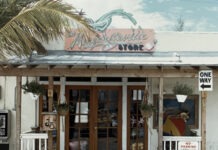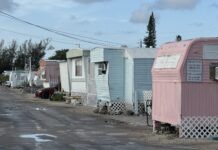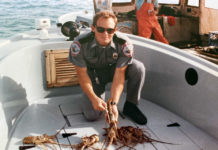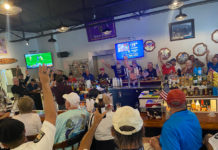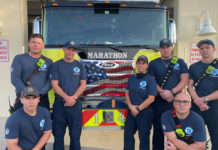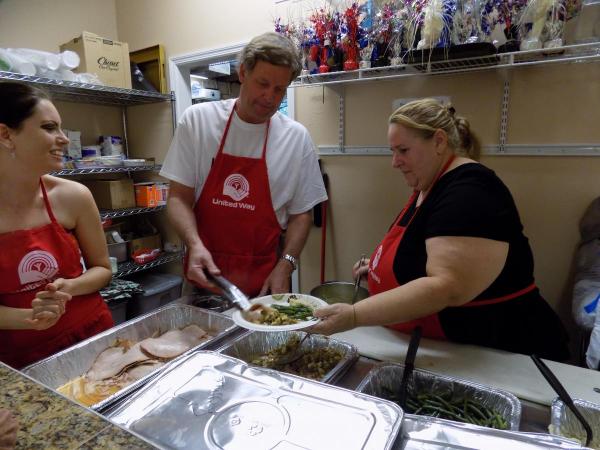
Paying for the basic needs is a struggle for many in the Keys. Per the United Way of the Florida Keys, 42 percent of households in Monroe County are having a hard time paying for housing, childcare, food, transportation and health care.
During a recent Islamorada Village Council meeting, United Way of the Florida Keys President and CEO Leah Stockton visited to present the latest ALICE (Asset-Limited Income-Constrained Employed) report that examined 2016 data. Stockton explained that ALICE households are the backbone of the community, but aren’t earning enough to cover needs such as food and housing. The report says ALICE survival family income is $34.46 per hour, yet local starting salaries are $11.83 per hour for food service staff, $10.13 an hour for cashiers and $16.19 for early childhood teachers.
“They work hard to provide critical services in the community but due to the high cost of living, they don’t earn enough to make ends meet,” Stockton said.
Stockton said the bare minimum to get by in the Keys, without any savings or assets, is $68,900 for a family of four, which is more than double the federal poverty guideline, $24,250 for a family of four. Housing makes up 44 percent of a person’s budget; and childcare can cost up to $200 a week. A single person needs to make $27,192 to survive, more than double the federal poverty level of $11,770 for a single adult.
A stability budget, which includes savings and increased budget for housing and other needs, is $42,228 for a single person and just over $119,600 for a family of four. The stability budget reflects a more secure situation to achieve a better quality of life.
Within the Keys, 48 percent of families in households were considered ALICE in 2014. Today, it’s at 42 percent. Actual figures show the number of ALICE households at 13,467 in 2014 and 12,734 in 2016. Stockton said the ALICE individuals are teaching children the ABCs, serving the morning cup of coffee or drawing blood at the doctor’s office.
“There’s a significant disparity between what a family needs to earn and what the current wages are for critical positions in the community,” she said. “This should matter to all of us because it affects the quality of life for all of us in the community.”
Breaking down ALICE households by area, the report, with 2016 data, showed more than 2,000 ALICE households in Islamorada. In Tavernier, the number is more than 700 and in Key Largo, the total is about 4,000. In Marathon, the figure totaled 3,000, and at Big Pine Key, data showed just over 2,000.While ALICE households may have a good job, the high cost of living and unexpected life events can leave these people vulnerable.
How does ALICE survive? Stockton said the households use short-term strategies that often are harmful in the long run. ALICE households rely on social services and nonprofits for help with items from food and adequate roofing to childcare.
“They skip preventative health care, home maintenance and bill paying,” she said. “ALICE individuals often have to make tough choices such as ‘am I going to be able to pay rent or will I be able to send my child to the dentist for needed services.’”
Stockton acknowledged that data within the report is pre-Irma and noted that ALICE households are now one crisis away from homelessness. Any accumulated savings these households had were used for evacuation and repairs.
“Living situations have become more unstable, our already overburdened rental market has become even more so and we’re seeing more people are living in substandard conditions because that’s what they need to do to get by,” she said. “The United Way and many nonprofit-based organizations here in the Keys are doing our part, but the community need is greater than ever before.”
Food pantries are reporting a 15 percent increase in services, while more than 1,000 households are still in disaster case management, Stockton said. Many families continue to rebuild their homes and get their lives back on track.
“We will wait to see what the next report brings, and the one after that as we analyze the 2017, ’18 and ’19 data,” Stockton said. “We know (Irma) was a total game changer, so we’ll have to wait to see what the results are, but we know here in our community it has had a negative toll.
BY THE NUMBERS
- The biggest driver of a family’s budget in Monroe County is the high cost of housing. Even based on the survival budget’s use of 40 percent of fair market value for a single efficiency unit, housing accounted for 44 percent of a single person’s monthly budget at $999.
- 54 percent of Keys families with children are considered ALICE or are living below the federal poverty line.
- Statewide, wages have not increased to compensate for the rising costs of living. In Florida; 67 percent of jobs pay less than $20 per hour, yet $27 per hour is needed to cover the basic costs of living according to the statewide Florida survival budget.
- Stock Island has the highest percentage of combined ALICE and poverty level families at 63 percent, followed by Tavernier (54 percent) and Marathon (53 percent). The lowest percentage is North Key Largo at 22 percent.
For more info read: Homeless in Paradise Part 1

